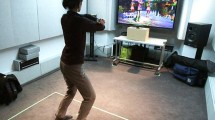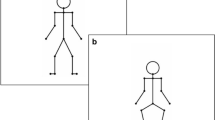Abstract
Sensorimotor synchronization is the coordination of rhythmic movement with an external beat. Dancers often synchronize each beat of their motion with an external rhythm. Compared with social dancing, competitive ballroom dancing requires a higher level of sensorimotor ability. Although previous studies have found that dance experience may facilitate sensorimotor synchronization, they did not examine this in competitive ballroom dancers. Thus, the present study compared sensorimotor synchronization in 41 nondancers and 41 skilled, competitive ballroom dancers as they performed a simple beat synchronization finger-tapping task. All participants finger-tapped freely at their preferred tempo before the formal experiments. Participants were then required to synchronize their finger-tapping with auditory, visual, or combined audiovisual signals in separate experiments and at varying tempos. To assess sensorimotor plasticity, the participants then repeated the free-tapping task after completing all three finger-tapping experiments. Compared with nondancers, dancers showed more accurate and stable beat synchronization. Dancers tapped before onset of all three types of sensorimotor stimulation, indicating a significant negative mean asynchrony and had a tendency to anticipate (predict) the stimuli. Dancers tended to auditory stimulation for beat sensorimotor synchronization, whereas nondancers tended to visual stimuli. Dancers had a faster tempo preference in the initial free-tapping task; however, the preferred tapping tempo increased in all participants in the second free-tapping task, suggesting that beat induction is affected by practice. Together these findings suggest that dance experience enhances sensorimotor synchronization and sensorimotor plasticity, with ballroom dancers tending to auditory stimulation for beat induction.




Similar content being viewed by others
References
Aschersleben G (2002) Temporal control of movements in sensorimotor synchronization. Brain Cogn 48:66–79. https://doi.org/10.1006/brcg.2001.1304
Baumann S, Koeneke S, Schmidt CF, Meyer M, Lutz K, Jancke L (2007) A network for audio-motor coordination in skilled pianists and non-musicians. Brain Res 1161:65–78. https://doi.org/10.1016/j.brainres.2007.05.045
Blais M, Albaret JM, Tallet J (2015) Is there a link between sensorimotor coordination and inter-manual coordination? Differential effects of auditory and/or visual rhythmic stimulations. Exp Brain Res 233:3261–3269. https://doi.org/10.1007/s00221-015-4394-6
Chen Y, Repp BH, Patel AD (2002) Spectral decomposition of variability in synchronization and continuation tapping: comparisons between auditory and visual pacing and feedback conditions. Hum Mov Sci 21:515–532. https://doi.org/10.1016/s0167-9457(02)00138-0
Dahl S, Huron D, Brod G, Altenmüller E (2014) Preferred dance tempo: does sex or body morphology influence how we groove? J N Music Res 43:214–223. https://doi.org/10.1080/09298215.2014.884144
Delignieres D, Lemoine L, Torre K (2004) Time intervals production in tapping and oscillatory motion. Hum Mov Sci 23:87–103. https://doi.org/10.1016/j.humov.2004.07.001
Delignières D, Lemoine L, Torre K (2004) Time intervals production in tapping and oscillatory motion. Hum Mov Sci 23:87–103. https://doi.org/10.1016/j.humov.2004.07.001
Di PN, Chartrand JM, Levkov GR, Montefuscosiegmund R, Desouza JF (2017) Experience-dependent modulation of alpha and beta during action observation and motor imagery. BMC Neurosci 18:28. https://doi.org/10.1186/s12868-017-0349-0
Dione M, Delevoye-Turrell Y (2015) Testing the co-existence of two timing strategies for motor control in a unique task: the synchronisation spatial-tapping task. Hum Mov Sci 43:45–60. https://doi.org/10.1016/j.humov.2015.06.009
Engström DA, Kelso JAS, Holroyd T (1996) Reaction-anticipation transitions in human perception-action patterns. Hum Mov Sci 15:809–832. https://doi.org/10.1016/s0167-9457(96)00031-0
Ermutlu N, Yucesir I, Eskikurt G, Temel T, Isoglu-Alkac U (2015) Brain electrical activities of dancers and fast ball sports athletes are different. Cogn Neurodyn 9:257–263. https://doi.org/10.1007/s11571-014-9320-2
Fine JM, Moore D, Santello M (2017) Neural oscillations reflect latent learning states underlying dual-context sensorimotor adaptation. Neuroimage 163:93–105. https://doi.org/10.1016/j.neuroimage.2017.09.026
Fujioka T, Ross B (2017) Beta-band oscillations during passive listening to metronome sounds reflect improved timing representation after short-term musical training in healthy older adults. Eur J Neurosci 46:2339–2354. https://doi.org/10.1111/ejn.13693
Honing H (2012) Without it no music: beat induction as a fundamental musical trait. Annals NY Acad Sci 1252:85–91. https://doi.org/10.1111/j.1749-6632.2011.06402.x
Hove MJ, Iversen JR, Zhang A, Repp BH (2013) Synchronization with competing visual and auditory rhythms: bouncing ball meets metronome. Psychol Res 77:388–398. https://doi.org/10.1007/s00426-012-0441-0
Iversen JR, Patel AD, Nicodemus B, Emmorey K (2015) Synchronization to auditory and visual rhythms in hearing and deaf individuals. Cognition 134:232–244. https://doi.org/10.1016/j.cognition.2014.10.018
Karpati FJ, Giacosa C, Foster NEV, Penhune VB, Hyde KL (2016) Sensorimotor integration is enhanced in dancers and musicians. Exp Brain Res 234:893–903. https://doi.org/10.1007/s00221-015-4524-1
Kattenstroth JC, Kalisch T, Kolankowska I, Dinse HR (2011) Balance, sensorimotor, and cognitive performance in long-year expert senior ballroom dancers. J Aging Res 2011:176709. https://doi.org/10.4061/2011/176709
Krause V, Pollok B, Schnitzler A (2010) Perception in action: the impact of sensory information on sensorimotor synchronization in musicians and non-musicians. Acta Psychol (Amst) 133:28–37. https://doi.org/10.1016/j.actpsy.2009.08.003
London J, Burger B, Thompson M, Toiviainen P (2016) Speed on the dance floor: auditory and visual cues for musical tempo. Acta Psychol (Amst) 164:70–80. https://doi.org/10.1016/j.actpsy.2015.12.005
Macdougall HG, Moore ST (2005) Marching to the beat of the same drummer: the spontaneous tempo of human locomotion. J Appl Physiol 99:1164–1173. https://doi.org/10.1152/japplphysiol.00138.2005
Madison G (2014) Sensori-motor synchronisation variability decreases as the number of metrical levels in the stimulus signal increases. Acta Psychol (Amst) 147:10–16. https://doi.org/10.1016/j.actpsy.2013.10.002
Miura A, Kudo K, Ohtsuki T, Kanehisa H (2011) Coordination modes in sensorimotor synchronization of whole-body movement: a study of street dancers and non-dancers. Hum Mov Sci 30:1260–1271. https://doi.org/10.1016/j.humov.2010.08.006
Miura A, Fujii S, Okano M, Kudo K, Nakazawa K (2016) Finger-to-beat coordination skill of non-dancers, street dancers, and the world champion of a street-dance competition. Front Psychol 7:542. https://doi.org/10.3389/fpsyg.2016.00542
Murgia M, Prpic V, O J, McCullagh P, Santoro I, Galmonte A, Agostini T (2017) Modality and perceptual-motor experience influence the detection of temporal deviations in tap dance sequences. Front Psychol 8:1340. https://doi.org/10.3389/fpsyg.2017.01340
Parncutt R (1994) A perceptual model of pulse salience and metrical accent in musical rhythms. Music Percept Interdiscip J 11:409–464. https://doi.org/10.2307/40285633
Rajendran VG, Teki S, Schnupp JWH (2017) Temporal processing in audition: insights from music. Neuroscience. https://doi.org/10.1016/j.neuroscience.2017.10.041
Ravignani A, Honing H, Kotz SA (2017) Editorial: the evolution of rhythm cognition: timing in music and speech. Front Hum Neurosci 11:303. https://doi.org/10.3389/fnhum.2017.00303
Repp BH (2005) Sensorimotor synchronization: a review of the tapping literature. Psychon Bull Rev 12:969–992. https://doi.org/10.3758/bf03206433
Repp BH (2006) Rate limits of sensorimotor synchronization. Adv Cogn Psychol 2:163–181. https://doi.org/10.2478/v10053-008-0053-9
Repp BH (2010) Sensorimotor synchronization and perception of timing: effects of music training and task experience. Hum Mov Sci 29:200–213. https://doi.org/10.1016/j.humov.2009.08.002
Repp BH, Penel A (2002) Auditory dominance in temporal processing: new evidence from synchronization with simultaneous visual and auditory sequences. J Exp Psychol Hum Percept Perform 28:1085. https://doi.org/10.1037//0096-1523.28.5.1085
Repp BH, Su YH (2013) Sensorimotor synchronization: a review of recent research (2006–2012). Psychon Bull Rev 20:403–452. https://doi.org/10.3758/s13423-012-0371-2
Romeas T, Faubert J (2015) Soccer athletes are superior to non-athletes at perceiving soccer-specific and non-sport specific human biological motion. Front Psychol 6:1343. https://doi.org/10.3389/fpsyg.2015.01343
Stupacher J, Wood G, Witte M (2017) Neural entrainment to polyrhythms: a comparison of musicians and non-musicians. Front Neurosci 11:208. https://doi.org/10.3389/fnins.2017.00208
Su YH (2014) Visual enhancement of auditory beat perception across auditory interference levels. Brain Cogn 90:19–31. https://doi.org/10.1016/j.bandc.2014.05.003
Su YH (2016) Visual tuning and metrical perception of realistic point-light dance movements. Sci Rep 6:22774. https://doi.org/10.1038/srep22774
Tierney A, Kraus N (2013) The ability to move to a beat is linked to the consistency of neural responses to sound. J Neurosci 33:14981–14988. https://doi.org/10.1523/JNEUROSCI.0612-13.2013
Tranchant P, Shiell MM, Giordano M, Nadeau A, Peretz I, Zatorre RJ (2017) Feeling the beat: bouncing synchronization to vibrotactile music in hearing and early deaf people. Front Neurosci 11:507. https://doi.org/10.3389/fnins.2017.00507
Wing AM, Kristofferson AB (1973) The timing of interresponse intervals. Percept Psychophys 13:455–460. https://doi.org/10.3758/bf03205802
Zelaznik HN, Spencer RMC, Ivry RB (2002) Dissociation of explicit and implicit timing in repetitive tapping and drawing movements. J Exp Psychol Hum Percept Perform 28:575–588. https://doi.org/10.1037/0096-1523.28.3.575
Acknowledgements
We thank our colleagues and students for their assistance in data collection. Our deepest gratitude goes to the anonymous reviewers for their careful work and thoughtful suggestions that have helped improve this paper. This work was supported by the National Natural Science Foundation of China (Grant no. 31571151), and Science and Technology Commission of Shanghai Municipality, China (Grant no. 17080503100).
Author information
Authors and Affiliations
Corresponding author
Ethics declarations
Ethical standards
All procedures performed in studies involving human participants were in accordance with the ethical standards of the Shanghai University of Sport Research Ethics Committee and with the 1964 Helsinki Declaration and its later amendments or comparable ethical standards.
Informed consent
Informed consent was obtained from all individual participants included in the study.
Conflict of interest
The authors declare that they have no conflict of interest.
Electronic supplementary material
Below is the link to the electronic supplementary material.
Rights and permissions
About this article
Cite this article
Jin, X., Wang, B., Lv, Y. et al. Does dance training influence beat sensorimotor synchronization? Differences in finger-tapping sensorimotor synchronization between competitive ballroom dancers and nondancers. Exp Brain Res 237, 743–753 (2019). https://doi.org/10.1007/s00221-018-5410-4
Received:
Accepted:
Published:
Issue Date:
DOI: https://doi.org/10.1007/s00221-018-5410-4




